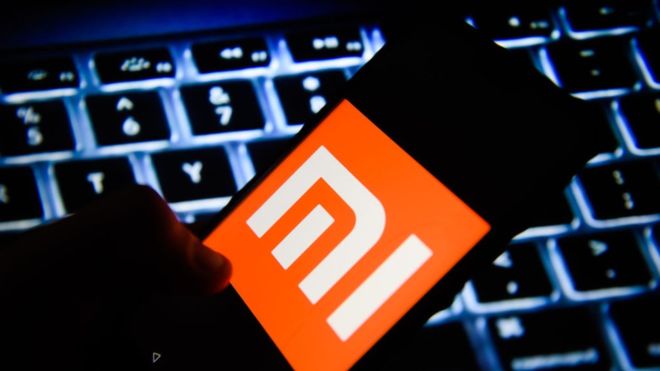Chinese language tech organisation Xiaomi has come to dominate India’s huge low-price phone market in a few quick years. The BBC’s Krutika Pathi talks to tech specialists to understand just how that occurred.
Fifteen minutes – this is how long it took for Xiaomi’s modern phone, Redmi observe 8, to sell out once it went on a “flash sale” on-line on Monday.
However this isn’t always uncommon a number of the company’s merchandise, and is a key a part of its India strategy.
“you have got to sign in on-line first and then keep a watch out for those flash sales – then you definately pounce,” Mala Bhargava, a era journalist, informed the BBC.
At the same time as Xiaomi’s mobiles are also available offline at stores, most new fashions are first sold on line, which accounts for greater than 1/2 of their income.
“the net community the brand has accumulated is incredible,” Jayanth Kolla, partner at telecom studies firm Convergence Catalyst, stated.
Whilst Xiaomi entered the Indian market in 2015, Mr Kolla defined, it did no longer invest in brick and mortar stores. As an alternative, they targeted on selling their merchandise on-line. This saved distribution costs low and that made the telephones cheaper.
“Their heavy on-line presence also helped them advantage a cult-like following in India, permitting Xiaomi to cement itself as a severe participant within the united states of america’s fickle phone marketplace,” he delivered.
Chinese organizations now manipulate extra than half of India’s burgeoning phone marketplace – with extra than 450 million customers, it’s about really worth $8bn (£6bn).
And Xiaomi, once referred to as the brand behind “the bad guy’s iPhone”, is main the % – it owns 28% of the Indian market. This is a steep upward push for a corporation that had simply three% of the market in 2016.

“It commenced by using putting out phones that had been iPhone lookalikes,” Ms Bhargava said. “Their first crop of phones was constantly compared to the Apple product and the organization even got criticised for it.”
However it was now not just that Xiaomi’s telephones appeared like iPhones. They had been additionally packed with functions and hardware that made Indians experience that they have been getting greater bang for his or her buck.
Its flagship Redmi range of telephones, for example, include a 64-megapixel camera however are low-priced, beginning at 9,999 rupees ($141) and going up to 17,999 rupees ($254).
Indian clients quickly gravitated toward the telephones – which gleamed like iPhones however at one-0.33 the fee.
“everybody desires an iPhone, but will accept a lookalike until they could find the money for the actual element,” Mr Kolla said, adding that his firm’s studies has found that Indian consumers regularly improve to a “top class smartphone”, maximum likely an Apple or Samsung cellular, as soon as their disposable earnings rises.
“The manner they approached their pricing allows provide an explanation for their recognition in India – customers had been getting better functions than before however at rock-backside expenses,” Mr Kolla stated.
Some other motive for Xiaomi’s rise, in addition to that of other chinese telephone makers, was the sluggish collapse of India’s domestic-grown mobile manufacturers because of the dearth of 4G functionality.
“there has been a time whilst you had Indian manufacturers like Micromax main the market,” Neil Shah, a generation analyst at Counterpoint research, said. “however the whole lot modified round 2016 and 2017 whilst 4G was brought in India.”
By the time 4G arrived in India, chinese language corporations had already managed to efficiently outfit reasonably-priced phones with 4G tech, and have been promoting them returned home.
“This made it plenty simpler for them to transition their mobiles from 3G to 4G in a single day in India. It’s what ultimately killed the Indian manufacturers,” Mr Shah said.
But opposition for the Indian market remains fierce and no person organisation has dominated it for too long.
Xiaomi’s percentage of the market has no longer grown from 28% on the grounds that remaining year, signalling a plateau. Korean tech massive Samsung is likewise close in the back of at 25%; and newer chinese brands like Realme are also becoming extra popular amongst Indian customers.
This may provide an explanation for why Xiaomi dipped its toes within the premium telephone marketplace in advance this 12 months, with a new variety of telephones called the k-20 collection.
“a few years ago, the top class marketplace become approximately three to 4 percent of the Indian cellphone marketplace. This has now grown,” Xiaomi’s India director, Manu Jain, said in an interview with the Hindu newspaper in July.
He introduced that the company had set its points of interest past the less expensive phone marketplace.
However Xiaomi’s costs, which variety from 20,000 to 30,000 rupees ($282 to $423), did not positioned it inside the league of the iPhone or Galaxy smartphones, which promote for considerably extra.
“it’s neither here nor there,” Mr Shah stated.
In keeping with Mr Kolla, the chinese enterprise wishes to “keep pushing its limits” if it wants to sit along Apple and Samsung.
“if they do not innovate and bring new products, they’ll be stuck promoting cheaper phones for some time.”

